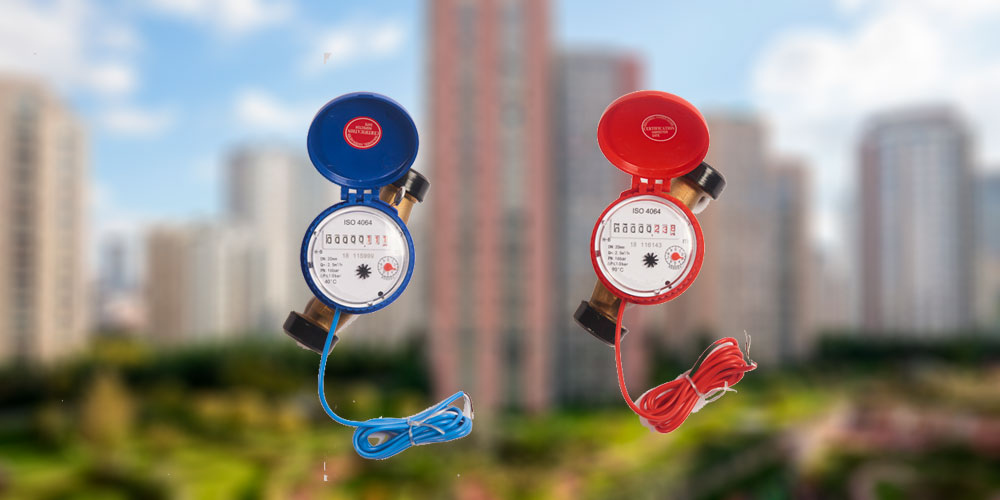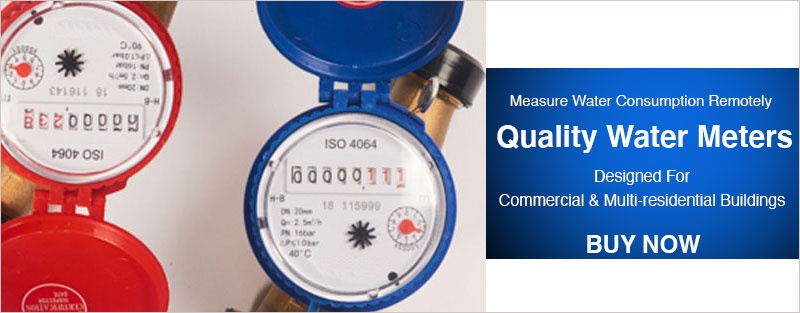We all know the primary role of a water meter is to measure water consumption at a property. What many people are not aware of is that besides this obvious function, it can also help detect water leaks, save water, and lower water bill.
It really helps to learn a little more about water meters, how they function, and why they play such an important role in water conservation
What is a Water Meter?
In simplest terms: a water meter is a device that measures the volume of water consumed by a home or unit owner, meters are used in the smallest commercial or residential units to large industrial buildings. Water volume is measured in US gallons or cubic feet, cubic meters, or liters depending on the pipe diameter and the accumulated flow. On the other hand, water metering is the actual practice/activity of measuring water consumption and flow by utility providers, of course, using water meters.
Water meters can help to save money by reporting water "spending". Residential Properties that have not installed individual water meters, bill tenants, based on an estimate; usually on the incoming pipe diameter, and in other cases, based on the surface area of their property (Square foot). Unfortunately, this method has no way to know the average water waste everyone pays for on their individual water bills, which means more money out of their wallet each month that could be saved.
Why Are Water Meters Important?
We can narrow down the reasons why water meters are essential into two categories:
- Environmental: Water meters reduce water wastage. More wastage, higher bills. There are good reasons why we'd want to control and reduce consumption. Our planet might be the first one on the list.
- Financial: The more we are conscious of how much we are spending; the more money we save. No more paying the cost for folks who are not so careful with their water consumption.
Submetering Benefits
Submetering, a new popular trend is on the rise. We're talking about the individualization of energy consumption. When a building is submetered, each household or tenant pays for their energy consumption (be it water or electricity, or gas) on a per-unit level. So, how does one know if a building is submetered? It's relatively easy; just ask your landlord about how tenants pay energy bills (are they included in the rent price?) According to Professional Movers Ottawa, you must know this before moving to your new apartment. Apartments in submetered buildings are more efficient in energy consumption.
Do Submeters Only Measure Volume?
Good question! It depends on the type of meter and the type of reporting that is available to the consumer. Volume isn't the only thing that ultrasonic water meters measure; they can also provide real-time flow rates, which is different than accumulated volume (Gallons per minute, Liters per second). Thanks to the higher accuracy, and particularly in the low flow range, ultrasonic meters also provide insights into potential leaks.
We can differentiate between different types of water meters.
Different Types of Water Meters
Positive Displacement (PD) Water Meters
Most commonly used in residential or small commercial buildings, PD water meters are highly accurate and have a calibrated cavity that rotates with the water flow. A counter accumulates the rotations of the cavity (typically a nutating disc) These meters are good for water flows in the low to medium range. For high flow rates, they present a higher pressure drop and higher wear and tear. In applications with large pipes where the user may see high and low flows, a compound meter (literally two meters into one) is required, which makes it more expensive.
Velocity Flow Water Meters
Velocity flow water meters are quite popular. Their high production volume makes them more affordable. As their name suggests, these meters register the volume based on the speed of the water flow through a calibrated cavity, a small propeller or turbine inside the cavity moves a magnet which rotates the dial to accumulate the volume. In low flow (small pipe diameters) a single jet type is reasonably accurate, for medium flow a Multijet type is recommended, and for large pipe diameters (above 2” in diameter) a Woltman type makes a better choice.
Ultrasonic Water Meters
Ultrasonic water meters have no moving parts which mean no wear and tear. They use ultrasound to register the vibration signature between two ends of a calibrated cavity, converting the speed of water flow times the volume in the cavity. This is the most innovative way to record water consumption inside a building. This type of meter allows managers, property owners, and landlords to register highly-accurate information in real-time. In other words: ultrasonic meters help folks avoid billing disputes in multi-unit residential and commercial buildings. Adding to that, it has the longest lifespan.
Electromagnetic (Mag) Water Meters
"Mag meters" don't possess any moving parts nor do they have any contact with water. They are installed outside the pipe, using two Doppler sensors to measure volume with reasonable precision, however not ideal for billing. They use a Doppler signal to reflect from the fluid inside the pipe and like the ultrasonic, they compute the speed of water flow by the volume inside the pipe between the sensors. They are ideal for retrofitting a building and used as check meters.
Water meters help us strive towards a more efficient future in terms of saving money (on an individual level) and energy (on a collective level). Hope you have realized just how important installing a water meter for your home is! If you are moving to a new apartment building anytime soon, make sure you opt for one that's submetered to reap the benefits that come with it!


